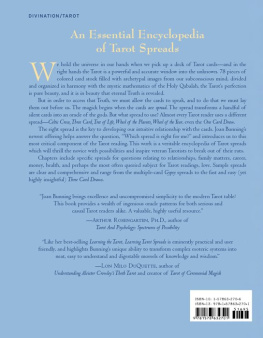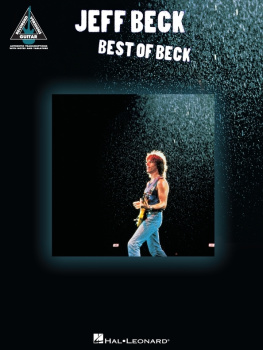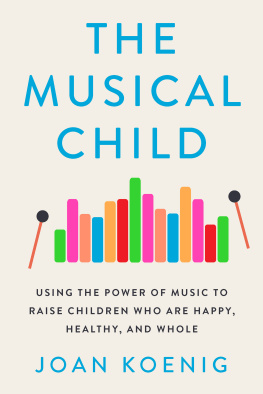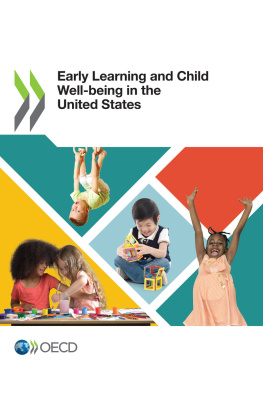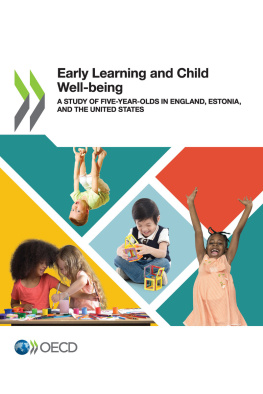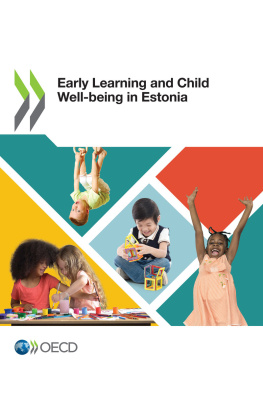Joan Beck - How to Raise a Brighter Child: The Case for Early Learning
Here you can read online Joan Beck - How to Raise a Brighter Child: The Case for Early Learning full text of the book (entire story) in english for free. Download pdf and epub, get meaning, cover and reviews about this ebook. year: 2001, genre: Science / Children. Description of the work, (preface) as well as reviews are available. Best literature library LitArk.com created for fans of good reading and offers a wide selection of genres:
Romance novel
Science fiction
Adventure
Detective
Science
History
Home and family
Prose
Art
Politics
Computer
Non-fiction
Religion
Business
Children
Humor
Choose a favorite category and find really read worthwhile books. Enjoy immersion in the world of imagination, feel the emotions of the characters or learn something new for yourself, make an fascinating discovery.
How to Raise a Brighter Child: The Case for Early Learning: summary, description and annotation
We offer to read an annotation, description, summary or preface (depends on what the author of the book "How to Raise a Brighter Child: The Case for Early Learning" wrote himself). If you haven't found the necessary information about the book — write in the comments, we will try to find it.
Joan Beck: author's other books
Who wrote How to Raise a Brighter Child: The Case for Early Learning? Find out the surname, the name of the author of the book and a list of all author's works by series.
How to Raise a Brighter Child: The Case for Early Learning — read online for free the complete book (whole text) full work
Below is the text of the book, divided by pages. System saving the place of the last page read, allows you to conveniently read the book "How to Raise a Brighter Child: The Case for Early Learning" online for free, without having to search again every time where you left off. Put a bookmark, and you can go to the page where you finished reading at any time.
Font size:
Interval:
Bookmark:
You, as a parent, can raise your childs lifelong level of intelligence and increase his or her joy in learning by how you care for your child the first six years after birth. This up-to-date, easy-to-follow guide provides the understanding, information, and simple activities that will help you nourish your youngsters mind well so he or she will grow up brighter and happier.
HOW TO RAISE
A BRIGHTER CHILD

POCKET BOOKS, a division of Simon & Schuster Inc. 1230 Avenue of the Americas, New York, NY 10020
Visit us on the World Wide Web:
http://www.SimonSays.com
Copyright 1967, 1975, 1986 by Joan Beck
Copyright renewed 1995 by Joan Beck
Copyright 1999 by Estate of Joan Beck
All rights reserved, including the right to reproduce this book or portions thereof in any form whatsoever. For information address Pocket Books, 1230 Avenue of the Americas, New York, NY 10020
ISBN-10: 0-7434-1742-9
ISBN-13: 978-0-7434-1742-6
POCKET and colophon are registered trademarks of Simon & Schuster Inc.
The poem My Sister Is a Sissy is reprinted from A New Kid on the Block, by Jack Prelutsky. Text copyright 1984 by Jack Prelutsky. By permission of Greenwillow Books, a division of William Morrow & Company, Inc.
To Ernie,
who shares the adventure
Your Childs First and Best Teacher: You
Why You Can Raise a Brighter Child
How the Atmosphere in Your Home Can Foster Intelligence
How to Raise a Brighter Baby: The First Year of Life
The Insatiable Drive to Learn: Ages One to Three Years
How to Stimulate Intellectual Growth in Three- to Six-Year-Olds
Should You Teach Your Preschooler to Read?
How You Can Encourage Your Child to Be Creative
Montessori Ideas You Can Use at Home
Computers and Preschoolers
How to Safeguard Your Childs Brain
The Joys of Having a Bright Child
This is a child-care book about your youngsters mind, not his body. It will tell you not how to feed, burp, diaper, and put your baby back to sleep but what you can do to stimulate her mind to learn and grow. It concerns the nourishment you should be giving his brain, not his stomach. It is devoted to thinking, not thumb sucking. It holds that parents should spend more timeand can have far more funsharing a youngsters delight in learning than fretting about toilet training.
We now know that parents can raise a childs useful level of intelligence substantially by the ways in which they care for him during the first six years of his life, long before he begins his formal education. Even the most skilled and loving parents, in the best of homes, have probably been stunting their childrens mental development to a degree because they have not known what fast-growing brains need so urgently.
The purpose of this book is to report to parents about new research on the growth of childrens intelligence during the first six years of life and to translate this research from scientific journals, professionals symposiums, and experimental laboratories into a form that will be useful to those who live and work with small children daily. It aims to do for your childs mind what other books do for her physical and emotional growth.
When this book was first published in the 1960s, scientists had just begun to unlock the secrets of the developing brain, and a few pioneering educators had designed early-learning programs to capitalize on those discoveries. This book was the first ever written to report to parents about that research and how they could use it to help their childrens brains grow better, to their lasting joy and benefit. Since then, hundreds of thousands of parents have tried these ideas, and many have written to say how much their youngsters have profited from this new understanding about the enormous and innate need to learn and how it could best be filled. Many of the letters echoed the key finding in early-learning research: Satisfying a childs mental hunger not only results in her becoming brighter but makes her happier and helps family life go more smoothly.
Now, an explosion of new discoveries has confirmed those basic ideas and given them new urgency. Even neuroscientists have been astounded to learn how rapidly a babys brain grows, how literally trillions of neural connections form in the first few months of life, and how those connections disappear forever by about age 10 if they are not used. The brain, in effect, becomes hard-wired at an early age, and the learning opportunities a child has during those first few years can make a permanent difference in her lifelong level of intelligence.
In the 1960s, the ideas presented here were somewhat controversial. Now, they have attracted the attention of organizations like the Carnegie Corporation; have been the subject of a White House conference; and have sparked a new industry in books, videotapes, and computer software designed to help babies learn. Educators have conducted hundreds of studies with children at all socioeconomic levels and consistently found that early learning opportunities can raise their IQs and give them a better chance to succeed in school.
The new research and the years of experience that go into this latest edition reconfirm the books first premise: Parentsinstead of being too emotionally involved to teach their own offspringare the first and most influential teachers a child ever has. The most obvious evidence is, of course, the way in which mothers and fathers help a youngster master the complexities of his native language long before the age of six.
You wont be able to follow all of the suggestions in this book with one individual boy or girl. Children differ too much, one from another. So do homes, parents, and circumstances. No child is ever developed, like a recipe, by adding precisely so much of each ingredient. Every youngster comes with different inborn characteristics and temperament and potentialities that a parent must take into consideration in rearing her. Parents also vary in how much time they can spend on child care and what responsibilities they must take on outside the home.
But this book will give you broad guidelines to follow. It will help you see your child in a new light, give you a fresh perspective on what her growing mind needs, and suggest hundreds of specific ways in which you can help to provide for these needs. Once you begin to think of her as an eager, growing, exploring, budding intelligence as well as a small human being with urgent physical and emotional needs, your whole relationship with her will be differentricher, happier, and more satisfying.
In writing this book, I am functioning in my primary role as a journalistnot as an educator or child-care professional. The new research about early learning and the promise it holds for so many young lives is one of the most exciting ideas of the last several decades and one about which I have been fortunate to do considerable reporting. I am deeply grateful to the physicians, educators, psychologists, and behavioral scientists who have shared their knowledge and explained their work to me so that I could report it to readers in a form most useful to them in their lives with small children. The names of parents and children and identifying details used in illustrative examples have been changed, although all of the incidents are factual.
I appreciate the encouragement I received from my editors at the Chicago Tribune and permission to include in this book some material from my articles and columns about children published by that newspaper and by the Chicago TribuneNew York News Syndicate, Inc. The information in this book comes from many sources, including research reports, professional journals, government studies, interviews, scientific meetings, physicians, child-care professionals, educators, psychologists, and parents; I am grateful to all of them for sharing their expertise and experience. Leon Shimkin, who was chairman of the board of Simon & Schuster when this book was first published, played a major role in making this book a best-selling success, and I will always be appreciative of his interest and enthusiasm. I also wish to thank James Ertel for his advice and help and Debra Bass for helping to assemble the latest research. Norma Howard, of the ERIC Clearinghouse on Early Childhood Education, contributed much by making computer searches for relevant research. The March of Dimes Birth Defects Foundation has provided information and help; I have learned much from their experts and, in particular, from Dr. Virginia Apgar when she was the foundations medical director. Physicians and staff at the American Academy of Pediatrics have been helpful in providing research and insight, as always. Todd Hallenbeck deserves thanks for his generous and cheerful help in setting up my computer. And so does my father, Roscoe Wagner, for myriad reasons.
Font size:
Interval:
Bookmark:
Similar books «How to Raise a Brighter Child: The Case for Early Learning»
Look at similar books to How to Raise a Brighter Child: The Case for Early Learning. We have selected literature similar in name and meaning in the hope of providing readers with more options to find new, interesting, not yet read works.
Discussion, reviews of the book How to Raise a Brighter Child: The Case for Early Learning and just readers' own opinions. Leave your comments, write what you think about the work, its meaning or the main characters. Specify what exactly you liked and what you didn't like, and why you think so.



